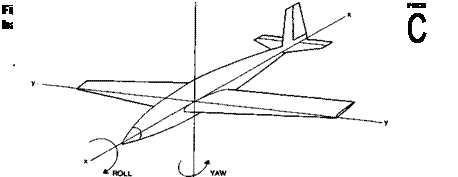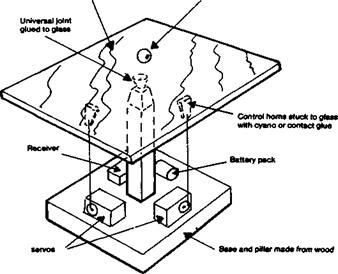NEUTRAL STABILITY
A stable aircraft will always tend to hold its trimmed attitude and an unstable one will always diverge. Between these two conditions is a narrow zone where the model will do neither. This is ‘neutral stability’. A neutrally stable aircraft is less difficult to fly than a truly unstable one. Any change of attitude, however caused, will not be corrected and the next gust or other disturbance will also not be countered, so the aircraft, while not positively diverging, will be at the mercy of every small atmospheric change and will wander away from the trimmed position constantly. A good example of neutral stability is seen in a ground training device sometimes used to teach pilots to fly radio controlled helicopters. A flat table which can be tilted by servo motors under radio control, has a steel bearing ball or marble rolling on its surface. The trainee has to position the ball on the table. Every smallest tilt sets it rolling towards the edge and it keeps on rolling until the table is tilted appropriately to stop it It then has to be tilted the other way to roll the ball to another position, and tilted again to stop it when it gets there!
Sheet glass or mirror Bearing ball
|
Fig. 12.1 Neutral Stability, a helicopter ‘simulator1 in which the trainee pilot must keep the bearing ball on the flat, but tiltable, table (From Dave Day’s book. Flying Model Helicopters). Positive stability corresponds to a shallow dish in place of the table. Instability would replace the table with a domed surface. |
 |
In contrast, a stable aircraft could be imitated by a similar device with a shallow dish instead of a flat plane. Centralising the controls would allow the ball to settle down in the middle. Holding the dish steady in some tilted position would find the ball bearing seeking the new position of the lowest point and it would soon settle there. A truly unstable situation would be to replace the table with a domed surface. A brilliant juggler might be able to keep the ball centred but very few model fliers could do it and the same applies to real model aircraft of all types. Aircraft lacking inherent aerodynamic stability are flown but require automatic stabilising devices, usually of gyroscopic and electronic kinds. They are highly manoeuvrable.












